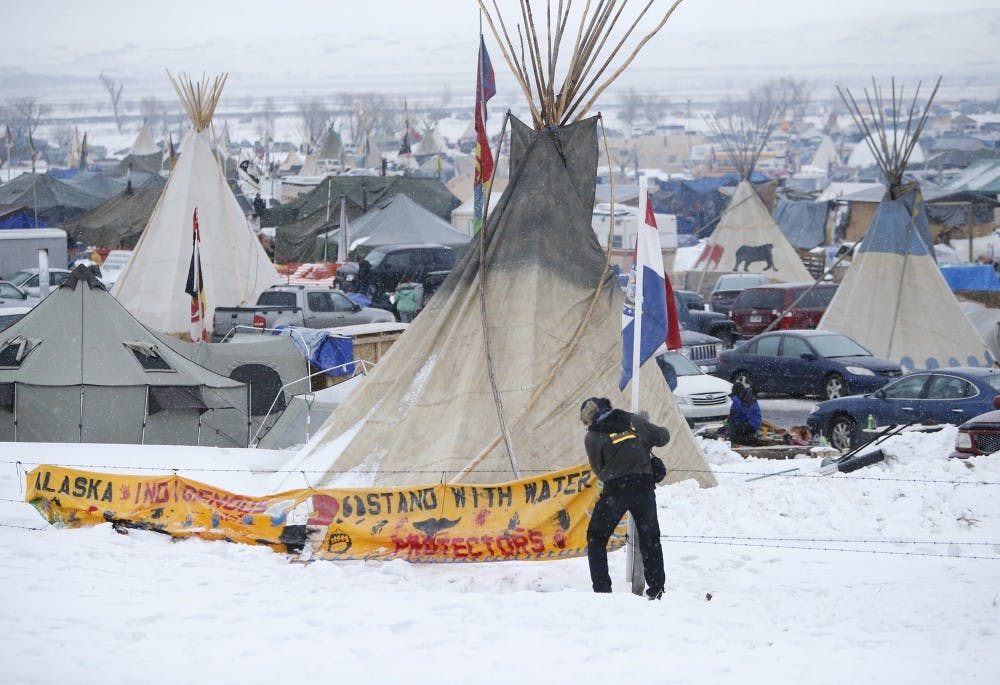Isn’t it unbelievable that the interests of Native Americans are still disregarded in the United States?
Did you hear about them in the debates? Nope.
Have you heard President Trump talk about it? Apparently there have been some discussions within the administration, but Native American policy isn’t really something he seems to think that about much, except when he has repeatedly and offensively called Massachusetts Sen. Elizabeth Warren “Pocahontas."
We live in a Native American-heavy state, so Arizona state politicians give Native American policy a little more thought, but it's still often seen as negative. ASU is home to many Native American students from various tribes, best represented by the multi-tribe American Indian Council.
But you don’t have to be a Native American student to care about the rights of Native Americans.
Data collected by New York Times and the U.S. Census Bureau.
For too long, there has seemed to be longstanding apathy concerning Native Americans. I know this personally from living almost all of my life in Massachusetts, where we punished a man who advocated for infecting Native Americans with smallpox blankets by naming a town after him.
That is what many people say is happening with the Dakota Access Pipeline, widely known as DAPL, or if you’re in activist circles, #NoDAPL.
On the surface, the Dakota Access Pipeline is a near-1200 mile-long oil pipeline going from North Dakota to Illinois, which would be a more cost-effective way of transporting crude oil, as opposed to shipping barrels by train.
Data collected by New York Times and the U.S. Census Bureau.
To Native American and environmental leaders, the project would contaminate local drinking water of Missouri River, which is the main source of drinking water for the Standing Rock Sioux, a local tribe of about ten thousand with a reservation that straddles the Dakotas, as well as pass through and likely destroy Native American burial sites and sacred places.
Whether you think those beliefs are legitimate or not, when President Trump signed an order that took steps to advance construction of the pipeline, as well as the Keystone XL Pipeline, he did not even mention concerns amongst Native Americans — not even a sentence.
This goes with a longstanding American tradition of not caring about the people who have been here far longer than any of us.
Sophia Giolitti, a freshman exploratory major, said she is very strongly against the construction of the Dakota Access Pipeline.
“If I could, I would be flying down there now,” Giolitti said.
After expressing frustration that she could not go to the Standing Rock protests herself, Giolitti says her father bought her a shirt enshrined with “I stand with Standing Rock” to satisfy her urge to get involved.
Lehi Sanchez, of the Navajo Nation, is on a break from ASU but will return as a sociology senior. He felt so strongly in his opposition to the Pipeline, he ventured down to the Standing Rock Indian Reservation in North Dakota to go to the ground zero of opposition against the pipeline. He said it was a “beautiful peaceful movement.”
“I was blown away at how peaceful the Sioux Nation and all the others that came and joined," Sanchez said. “It was interesting because I guess it was a protest against a pipeline, but it really was a group effort to save their sacred land.”
He says the Sioux Nation’s response came after a long list of treaties with the federal government that were broken by the government.
Sanchez was not optimistic about the way policy was shaping up for Native Americans in the U.S. He particularly pointed to Standing Rock as well as recent alleged attempts, including Utah, to give Native American land over to private corporations.
“I feel like the rights we have as Native Americans and what we fought for so long is just being erased," Sanchez said. "I don’t think there’s a second thought on pushing through on the Pipeline."
Nowadays, the vast atrocities that have occurred against the indigenous people of the Americas is finally starting to break into the public discourse, especially among Millennials.
It seems like every Columbus Day, I see more and more people talk critically about our history, and facing an unwelcome truth: the U.S. committed atrocities too, ones that many say verged on genocide.
We live in a different time now — the elimination of Native Americans from U.S. territory is no longer official U.S. policy, and neither is forced assimilation. However, when a corporation has an interest, it’s clear where the government stands in regards to Native Americans. Under President Trump, that stance only became clearer.
Reach the columnist at Marinodavidjr@gmail.com or follow @Marinodavidjr on Twitter.
Editor’s note: The opinions presented in this column are the author’s and do not imply any endorsement from The State Press or its editors.
Want to join the conversation? Send an email to opiniondesk.statepress@gmail.com. Keep letters under 300 words and be sure to include your university affiliation. Anonymity will not be granted.
Like The State Press on Facebook and follow @statepress on Twitter.




